Return to Kansas Cosmosphere
Q-Ball
The Q-ball, part of the emergency detection system, was located at the extreme top of the Apollo launch escape tower. It had eight static ports (openings) around its perimeter near the forward end of the Q-ball outer shell used to measure differences in aerodynamic forces (aerodynamic forces are referred to as "Q" in flight equations; it is common during launches to hear references to "max Q").
The Q-ball has two independent measurement channels, Channel A and Channel B. Each channel uses two sets of inlet ports, one for pitch and one for yaw. The two ports in each set are located 180° apart, allowing measurement of changes in aerodynamic forces. Located at the top of the launch vehicle, the Q-ball is unaffected by turbulence caused by the launch. Located the farthest distance from the engines, it is the best location to measure changes in pitch and yaw.
The measurements taken by the Q-ball are fed into the emergency detection system, which determine whether the changes in flight direction exceed angular overrate limits, which might be cause for an abort.
While on the pad, the Q-ball is protected by a cover to keep the ports free of dust and debris. NASA photo S68-55415 shows the cover installed on Apollo 8. The cover is removed approximately 9 seconds before launch.
The Q-ball's shell was made of aluminum (the one on display here presumably has had the aluminum replaced by Plexiglas). The Q-ball was 13.37 inches long, 13.3 inches in diameter, and weighed 35 pounds.
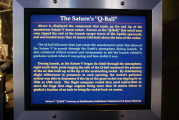 dsca0546.jpg |
 dsca0548.jpg |
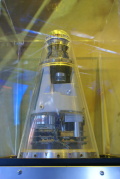 dsca0550.jpg |
 dsca0553.jpg |
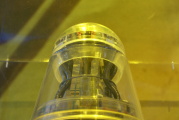 dsca0557.jpg |
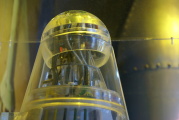 dsca0555.jpg |
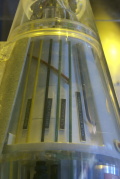 dsca0554.jpg |
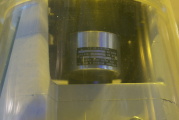 dsca0556.jpg |
Return to Kansas Cosmosphere